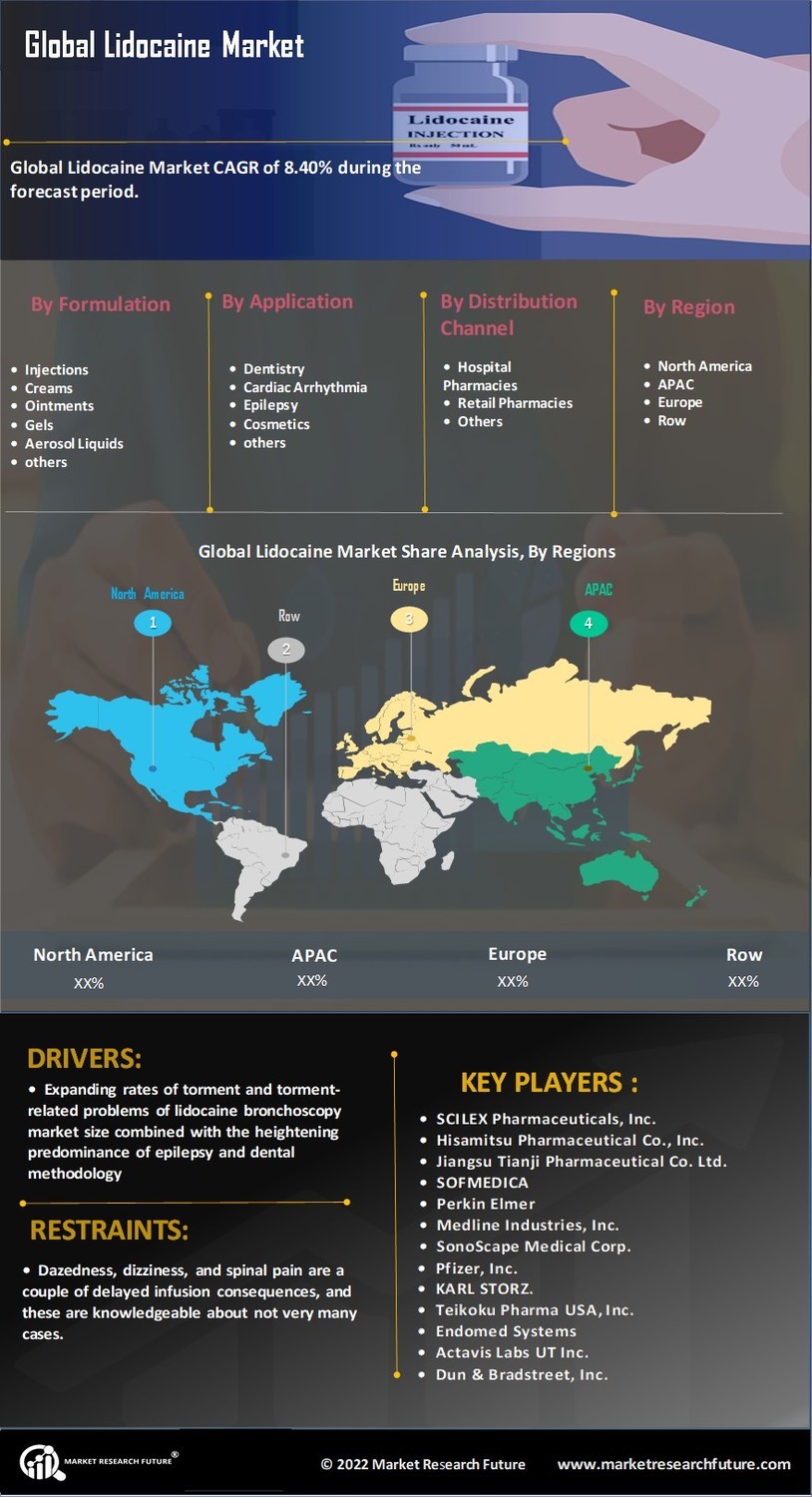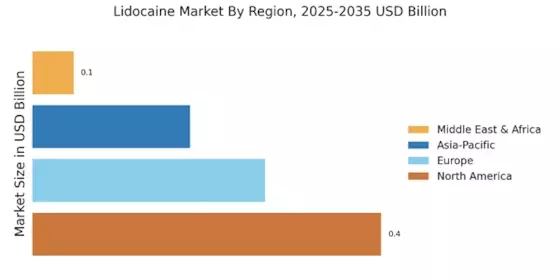Advancements in Medical Technology
Technological advancements play a pivotal role in shaping the Lidocaine Market. Innovations in drug delivery systems, such as transdermal patches and injectable formulations, enhance the efficacy and convenience of lidocaine administration. These advancements not only improve patient compliance but also expand the range of applications for lidocaine in various medical fields. For instance, the development of sustained-release formulations allows for prolonged analgesic effects, which is particularly beneficial in outpatient settings. The integration of lidocaine in combination therapies further amplifies its therapeutic potential, thereby driving market growth. As healthcare technology continues to evolve, the Lidocaine Market is likely to witness increased adoption of these innovative solutions, ultimately leading to enhanced patient outcomes and satisfaction.
Increase in Chronic Pain Conditions
The Lidocaine Market is significantly influenced by the rising incidence of chronic pain conditions, which necessitate effective pain management strategies. Conditions such as neuropathic pain, arthritis, and fibromyalgia are becoming increasingly prevalent, prompting healthcare providers to seek reliable anesthetic options. Lidocaine Market, known for its efficacy in managing acute and chronic pain, is often utilized in various treatment protocols. Recent statistics indicate that chronic pain affects approximately 20% of the adult population, underscoring the urgent need for effective pain relief solutions. This growing patient population is likely to drive demand for lidocaine-based products, thereby propelling the Lidocaine Market forward. Additionally, the increasing focus on personalized medicine may further enhance the role of lidocaine in tailored pain management approaches.
Regulatory Approvals and Guidelines
The Lidocaine Market benefits from favorable regulatory approvals and guidelines that facilitate the use of lidocaine in various medical applications. Regulatory bodies are increasingly recognizing the importance of lidocaine in pain management and surgical procedures, leading to streamlined approval processes for new formulations and delivery methods. This regulatory support not only encourages innovation but also instills confidence among healthcare providers regarding the safety and efficacy of lidocaine products. As new guidelines emerge, promoting the use of lidocaine in outpatient and minimally invasive procedures, the market is poised for growth. Furthermore, the establishment of clear protocols for lidocaine administration enhances its acceptance among practitioners, thereby contributing to the overall expansion of the Lidocaine Market.
Rising Demand for Local Anesthetics
The Lidocaine Market experiences a notable increase in demand for local anesthetics, driven by the growing prevalence of surgical procedures and pain management therapies. As healthcare providers seek effective solutions for pain relief, lidocaine emerges as a preferred choice due to its rapid onset and safety profile. According to recent data, the market for local anesthetics is projected to expand at a compound annual growth rate of approximately 5.2% over the next several years. This trend indicates a robust growth trajectory for the Lidocaine Market, as more practitioners adopt lidocaine for various applications, including dental, dermatological, and minor surgical procedures. Furthermore, the increasing awareness of pain management options among patients contributes to the rising utilization of lidocaine, thereby enhancing its market presence.
Growing Awareness of Pain Management Options
The Lidocaine Market is experiencing growth due to the increasing awareness of pain management options among patients and healthcare providers. Educational initiatives and campaigns aimed at informing both practitioners and patients about effective pain relief strategies have led to a heightened interest in lidocaine as a viable anesthetic choice. As patients become more proactive in seeking pain management solutions, the demand for lidocaine products is likely to rise. Additionally, the emphasis on patient-centered care encourages healthcare providers to consider lidocaine for its rapid onset and minimal side effects. This shift in focus towards comprehensive pain management strategies is expected to bolster the Lidocaine Market, as more individuals seek effective and safe options for pain relief.


















Leave a Comment